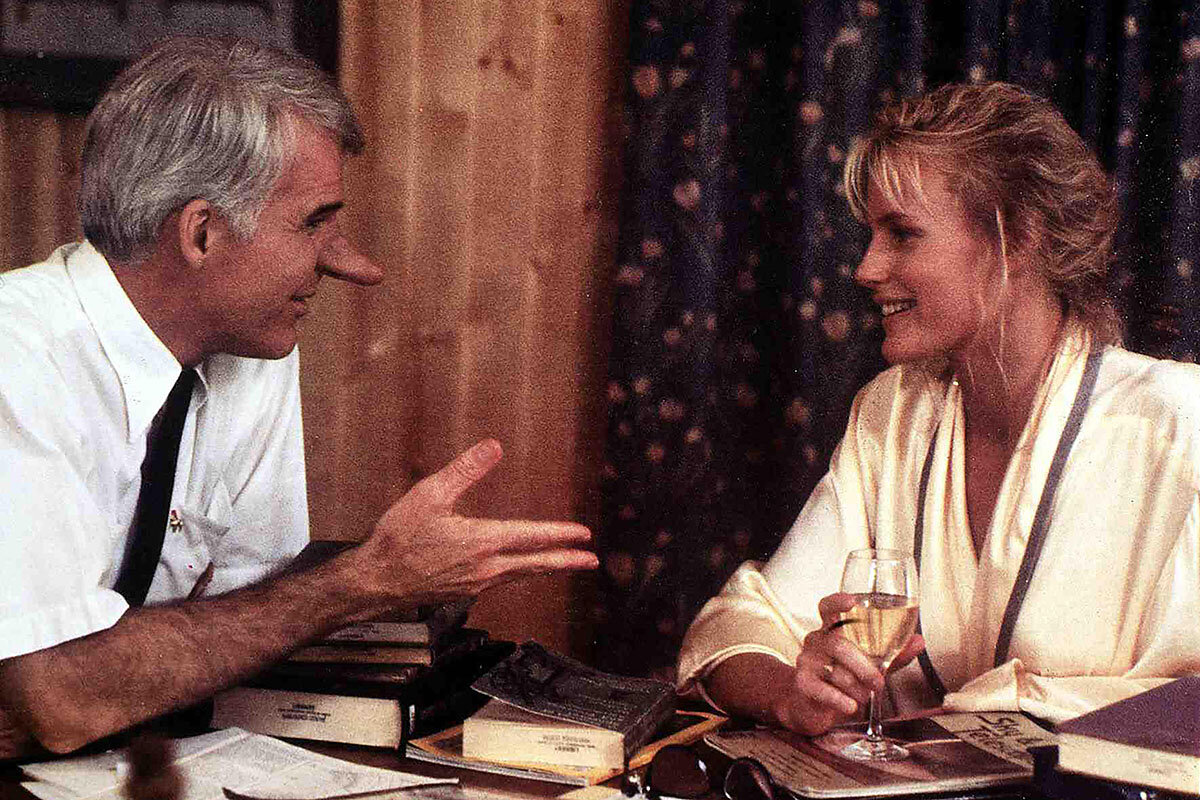Home theater: Our critic offers his favorite feel-good flicks
Loading...
“There is no Frigate like a Book,” wrote Emily Dickinson, but that was before movies were invented. Movies can transport you just about anywhere, and these days, more than ever, we all crave a safe harbor. I can’t think of many better ways to boost the spirits than by watching wonderful movies that make us feel good all over. I’ll kick things off with three of my favorites, all readily accessible for home viewing, in what I hope will become an ongoing column of pandemic picker-uppers.
[Editor’s note: As a public service, all our coronavirus coverage is free. No paywall.]
“Some Like It Hot”
Why We Wrote This
In times of uncertainty, we value a good laugh. Film critic Peter Rainer recommends a selection of his favorite feel-good choices to help. “Movies can transport you just about anywhere,” he says, “and these days, more than ever, we all crave a safe harbor.”
Let’s start with “Some Like It Hot” the classic 1959 Billy Wilder comedy, co-written with his frequent collaborator I.A.L. Diamond, and starring Tony Curtis and Jack Lemmon in top comedic form. They play Joe and Jerry, low-rent Chicago jazz musicians who witness a gangland shootout and, fearing mob retaliation, flee, in drag, to Miami with an all-girl band. Gender confusions abound. “Daphne” (Lemmon), despite her rebuffs, is wooed by millionaire playboy Osgood Fielding III (the great Joe E. Brown, with his mile-wide smile). “Josephine” (Curtis), adopting a second disguise as “Junior,” the Shell Oil heir, falls for Marilyn Monroe’s Sugar Kane Kowalczyk, the band’s singer and ukulele player. The plot thickens when the mob boss who engineered the Chicago massacre, George Raft’s “Spats” Colombo, checks into the same Miami hotel for a gangland summit.
If you’ve never seen this movie before, I truly envy you. It’s one of the funniest films ever made – maybe THE funniest. And if you’ve seen it more than a dozen times, as I have, rest assured it remains as hilarious as it was the first time. That’s partly because, knowing what’s coming, we can savor the best moments when they arrive on schedule. As Junior, Curtis sports a note-perfect Cary Grant accent. Lemmon, one of the rare actors who could play high comedy and serious drama with equal conviction, has never been more giddy than in the scene where he dances the tango with Osgood until dawn. Soon after, he announces to a stunned Joe that he and Osgood are engaged.
Monroe is also at her dreamy comedic peak here. Whatever diva difficulties Wilder may reportedly have had directing her on set (which was actually the famed beachside Hotel del Coronado near San Diego), nothing of that shows up in the film.
As seen through the eyes of Joe and Jerry, “Some Like It Hot” really plays up the ways in which men can be flabbergasted by women, with how they look and talk and move. The plot, especially for 1959, may be risqué but the tone throughout is heedlessly innocent. And, of course, with the possible exception of “Casablanca,” it boasts the best closing line in all of movies. I’ll resist – just barely – the impulse to give it away. (Rated PG)
“Steamboat Bill, Jr.”
If you, or any children you know, have never experienced the great Buster Keaton, there is no better place to start than “Steamboat Bill, Jr.,” the 1928 film he co-directed with Charles Reisner. Keaton, whose trademark deadpan was actually quite expressive – look closely! – plays the citified college graduate son of a tough-as-nails Mississippi steamboat owner (hulking Ernest Torrence). Dad disapproves of his son’s foppish ways, but Junior proves himself the better man in an astonishing whirlwind storm sequence at the end. Its most famous gag, shot without a stunt double, has the façade of a house falling over Keaton, framing him in the rectangle of a window. Don’t try this at home – or anywhere else. If this film gives you a hearty appetite for more Keaton, try “The General,” “The Navigator,” “Sherlock Jr.,” and “Seven Chances.” All masterpieces. (Unrated)
“Roxanne”
The actor who learned the most from Keaton about physical comedy was Steve Martin. He is at his peak in Fred Schepisi’s 1987 “Roxanne,” the “Cyrano de Bergerac” update that he also wrote. He plays C.D. Bales, the long-nosed fire chief in a Washington off-season ski resort town who pines for Roxanne (Daryl Hannah), a starry-eyed astronomy student. When the film was first released, I wrote that it was one of the most elating romantic comedies ever made in this country. I still feel that way. It makes you feel unreasonably happy, as if you were watching colors being added to a sunset. (Rated PG)
I wish you all happy viewing.
These films are available for rent from Amazon’s Prime Video, YouTube, and Google Play. “Some Like It Hot” also airs on the Turner Classic Movies (TCM) network on March 25, and is leaving Prime on March 31.








